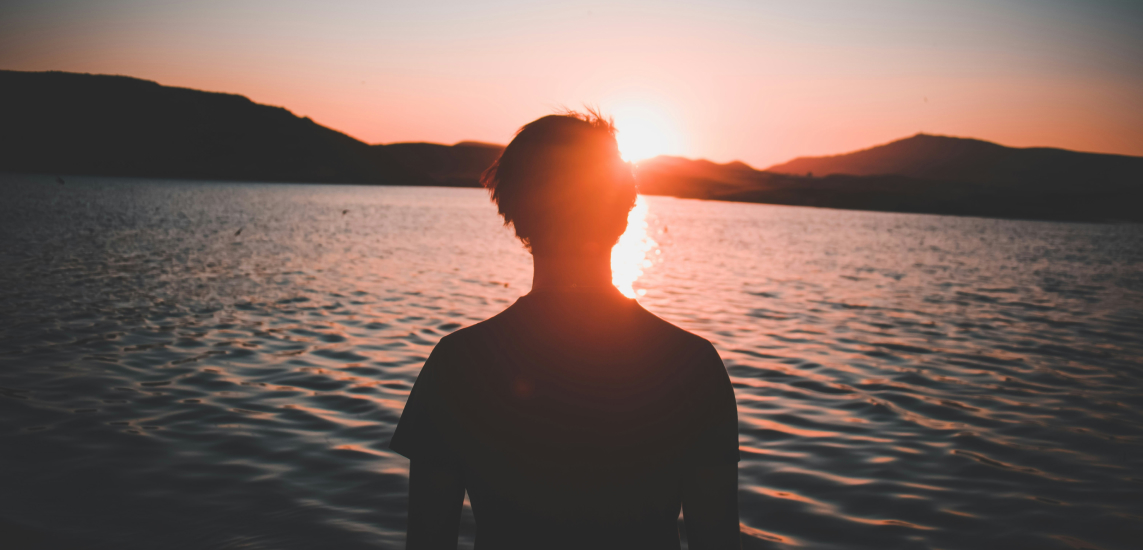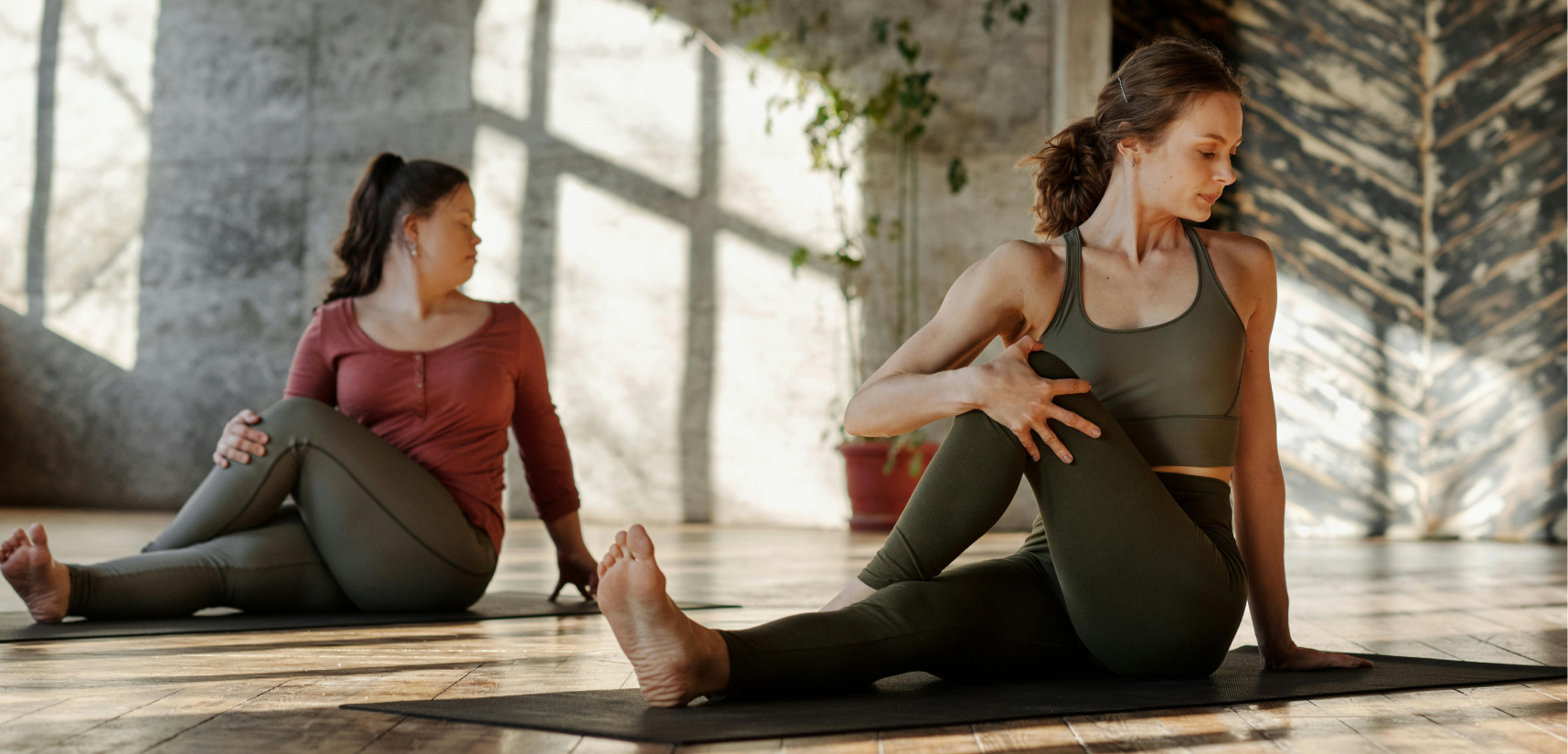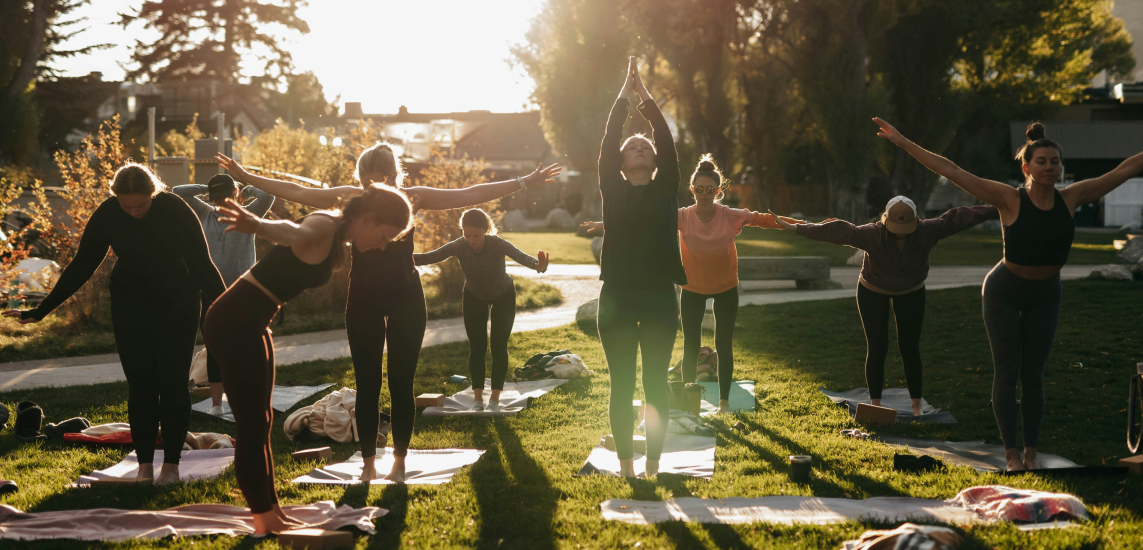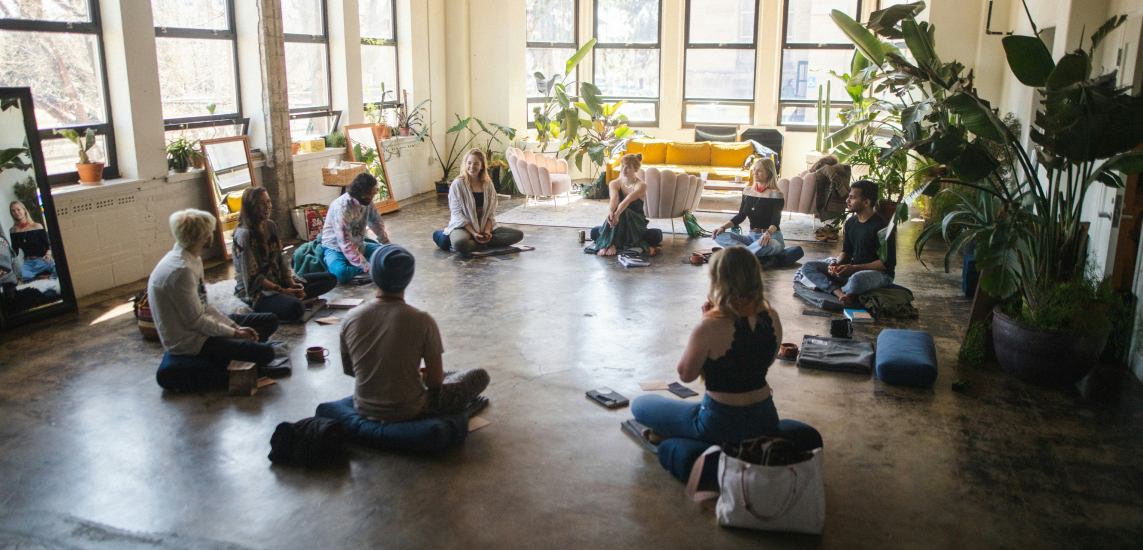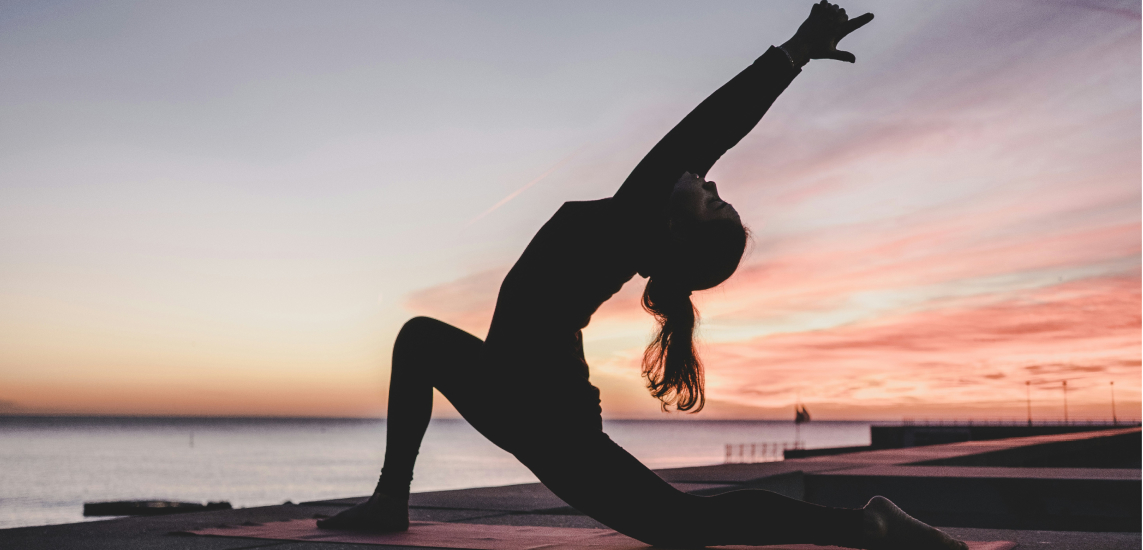This article was created using insights from Insight Timer’s yoga and meditation experts.
Yoga retreats have become increasingly popular as more people seek ways to escape the hustle and bustle of everyday life and reconnect with themselves. Whether you’re a seasoned yogi or a complete beginner, a first yoga retreat can be a transformative experience that nurtures your body, mind, and spirit—from the soothing rhythm of meditation to the warmth of a like-minded community. These retreats offer a unique opportunity for rest, reflection, and renewal, set in serene environments that encourage self-discovery.
If you’ve just decided to attend your first ever yoga retreat, you might be wondering what to expect, how to prepare, and how to make the most of this adventure. Don’t worry—this guide is here to help! We’ll walk you through everything from packing essentials to setting intentions, so you can step onto your mat with confidence and an open heart. Let’s dive in!
Key takeaways:
- A first yoga retreat is a transformative experience that goes beyond yoga practice, offering opportunities for meditation, community, and immersion in nature.
- Preparation is key: Study the itinerary, pack essentials like comfortable yoga clothing and a journal, and set meaningful intentions to guide your journey.
- A typical day balances structured activities like yoga classes and workshops with free time for relaxation, exploration, and personal reflection.
- Retreats are for everyone, regardless of experience level, and offer a welcoming space to disconnect, recharge, and connect with like-minded individuals.
Why a yoga retreat is more than just yoga
A yoga retreat is so much more than just attending yoga classes. It’s a holistic experience designed to help you disconnect from stress and reconnect with yourself. Beyond the physical practice, you’ll often find opportunities for meditation, workshops, and cultural activities that deepen your understanding of yoga and its principles.
Many retreats also emphasize immersion in nature, allowing you to explore a new place while fostering a sense of peace and well-being. Whether it’s a morning walk through a lush forest or an evening meditation under the stars, these experiences can be just as impactful as the yoga practice itself. Plus, the sense of community you’ll build with fellow participants and yoga teachers can be incredibly rewarding.
Francesca Jolly, an Insight Timer retreat host, emphasizes the importance of approaching your first yoga retreat with openness. She encourages first-time attendees to “approach it with an open mind and a willingness to embrace new experiences.”
The science behind yoga retreats
Research shows that yoga retreats can have profound effects on our mental and physical health. Studies have found that attending a retreat can lead to lasting changes in the brain, including reduced stress and improved emotional regulation. The combination of yoga, meditation, and time spent in nature can help:
- lower cortisol levels
- improve brain function
- boost mental health
- enhance overall well-being
A 2017 study published in Frontiers in Human Neuroscience found that participants who attended a three-month yoga and meditation retreat experienced significant improvements in mindfulness, self-compassion, and the benefits shared above. While most people aren’t attending three-month-long retreats, they can still glean similar benefits from shorter retreat experiences—helping them integrate a sense of calm and balance into everyday life.
How to prepare for your first yoga retreat
Preparing for your first yoga retreat doesn’t have to be overwhelming. By taking a few simple steps, you can ensure you’re ready to fully embrace the experience.
Studying the itinerary
Before you click book, take time to review the retreat’s itinerary. This will give you a clear idea of what to expect, from the schedule of yoga classes to optional activities like hiking or spa treatments—and it will help you understand if the retreat is right for you! Pay attention to the level of difficulty. Some retreats are designed for beginners, while others may cater to more advanced practitioners.
Jenny Clise, an Insight Timer retreat host, emphasizes the importance of choosing a retreat with a trusted leader:
“Book with a teacher you trust and connect with—your experience is shaped by the people leading it. While the location is exciting, it’s the intention and curation that truly make a retreat transformative.”
Look for details about:
- Teacher credentials: Does the teacher have yoga training certification(s)? What about other credentials?
- Yoga types: Will you be practicing hatha, vinyasa, or kundalini yoga? Do you need to know advanced asanas?
- Schedule: What is the balance between structured activities and free time?
Activities: Are there any special workshops or cultural experiences that peak your interest?
Packing essentials
Once you’ve studied the itinerary, you’ll have a better idea of what to pack. Most retreat facilitators will send a detailed packing list prior to the retreat, but here are some typical essentials to consider:
- comfortable yoga clothing (think breathable fabrics)
- a yoga mat (check if the retreat provides one)
- a journal for reflection
- a swimsuit for pool or beach activities
- toiletries and any personal items you’ll need
- a reusable water bottle
- sunscreen
- prescribed medications or vitamins
Francesca adds:
“A reusable water bottle, SPF, and a shawl or blanket for meditation sessions are often overlooked but can make a big difference. The key is packing for comfort and adaptability so you can fully enjoy the experience.”
Setting intentions
Mentally and emotionally preparing for your retreat is just as important as packing the right gear.
Sean Corey, an Insight Timer retreat host, suggests:
“Take a few moments to reflect before you arrive. What do you hope to gain from this experience? Your intention doesn’t need to be complicated—it can be as simple as breathe, trust, or let go.”
You may even want to set intentions before booking a retreat. Some questions to ask yourself include:
- How are you hoping to feel after attending a retreat?
- What type of environment would you like to be surrounded by (e.g., lush forest, sandy beaches, etc.)?
- What are you hoping to let go of? Any habits or thought patterns?
Ready to experience a yoga and wellness retreat in Mexico? Join Rekindle Your Spirit: Mexico Yoga, Health and Wellness Retreat in Yelapa from January 24–30, 2026. This week-long journey blends yoga, mindfulness, and community connection to help you reset and return home with renewed energy.
A typical day at a yoga retreat: What to expect
A daily schedule at a yoga retreat varies depending on the retreat type and location, but usually features a blend of structure and flexibility. Here’s what a typical day might look like:
- Morning: Start with a gentle meditation or yoga class to awaken your body and mind.
- Breakfast: Enjoy a healthy, often vegetarian meal with your group.
- Mid-morning: Participate in a workshop or a more active yoga class.
- Afternoon: Take time to relax, explore the surroundings, or enjoy optional activities like hiking or spa treatments.
- Evening: Wind down with a restorative yoga practice or meditation session before dinner.
Jenny shares:
“Every retreat is unique, but a typical day includes yoga, nourishing meals, mindful activities, and plenty of time to explore. The goal is to create balance between movement, rest, and adventure.”
Tips to make the most of your yoga retreat experience
To truly benefit from your first yoga retreat, keep these tips in mind:
- Embrace the schedule: Try to participate in as many activities as possible, but don’t stress if you need to take a break.
- Connect with others: Introduce yourself to fellow participants and build a sense of community.
- Stay present: Avoid overthinking or worrying about perfection. Focus on being in the moment.
- Try something new: Whether it’s a new style of yoga or a cultural activity, step out of your comfort zone.
- Journal your experience: Reflect on your thoughts and feelings throughout the retreat.
Francesca advises:
“Allow yourself to disconnect from distractions—put your phone on silent, step away from emails, and immerse yourself in the present moment.”
Integrating the retreat’s benefits into daily life
One of the most rewarding aspects of a yoga retreat is the opportunity to carry its benefits into your everyday life. Sean emphasizes:
“Before leaving the retreat, take time to identify your minimum daily practice. What’s the one practice you can commit to every day, no matter what life throws your way?”
Some other ways to integrate the retreat’s benefits include:
- attending local yoga classes to maintain your practice
- building a consistent meditation routine
- seeking out workshops or online communities to stay connected
- incorporating mindfulness into your daily routine
Common misconceptions about yoga retreats
There are many myths surrounding yoga retreats, many of which prevent potential attendees from signing up. Let’s clear them up:
- “You need to be an advanced yogi.” Not true. Retreats cater to all levels of yoga practitioners, including beginners. In fact, some are specifically designed for beginner yogis!
- “Retreats are only for relaxation.” While relaxation is a big part of it, retreats can also be transformative and energizing. It all depends on the type of yoga retreat you select.
- “It’s weird to go alone.” Most people attend retreats solo and leave with lifelong friends or connections.
Experience Insight Timer’s yoga retreats
At Insight Timer, we offer a variety of yoga retreats to suit every level and interest. Explore transformative retreats led by renowned yoga instructors, designed to help you reconnect with yourself. Whether you’re looking for a beginner-friendly escape or a deeper dive into yoga and meditation, our platform makes it easy to find the perfect retreat.
Frequently asked questions about yoga retreats
Do I need to be an experienced yogi to attend a retreat?
No, you don’t! Many retreats are specifically designed for beginners and welcome participants of all levels. Whether you’ve never stepped on a mat or have been practicing for years, the focus is on creating a supportive and inclusive environment. The beauty of a retreat is that it’s about your personal journey, not about being “good” at yoga.
Can I go on a yoga retreat alone?
Absolutely! In fact, many people attend retreats solo and find it to be a deeply rewarding experience. Going alone allows you to fully immerse yourself in the retreat without distractions, and it’s a wonderful opportunity to meet like-minded individuals. Retreats often foster a strong sense of community, so you’ll likely leave with new friends and connections.
How do I choose the right yoga retreat for me?
Choosing the right retreat depends on your goals, preferences, and comfort level. Start by considering the location—do you want to be near the ocean, in the mountains, or somewhere entirely new? Next, think about the retreat’s focus: Some emphasize relaxation, while others include adventure or skill-building. Research the retreat leader and read reviews to ensure their style aligns with your needs.
How many days should my first yoga retreat be?
For first-timers, a three to five day retreat is often ideal. It’s long enough to immerse yourself in the experience without feeling overwhelmed. Shorter retreats are a great way to dip your toes into the world of yoga retreats, while longer ones (seven to 10 days) offer a deeper dive into yoga practice and self-discovery.
Can I attend a yoga retreat if I have injuries or health conditions?
Yes, you can! Most retreats are designed to be inclusive and accommodating. Be sure to communicate any injuries or health conditions to the retreat leader beforehand so they can tailor the experience to your needs. Yoga teachers are trained to offer modifications and alternative postures, ensuring you can participate safely and comfortably. If you have specific concerns, it’s always a good idea to consult your healthcare provider before attending.
What is the average cost of a yoga retreat?
The cost of a yoga retreat can vary widely depending on factors like the retreat center, duration, and inclusions. On average, retreats range from a few hundred to several thousand dollars.
Budget-friendly options might include shared accommodations and fewer amenities, while luxury retreats often feature private rooms, gourmet meals, and additional activities like spa treatments. Be sure to check what’s included in the price, such as meals, transportation, and excursions, to find the best value for your needs.
References
Cahn, B. R., Goodman, M. S., Peterson, C. T., Maturi, R., & Mills, P. J. (2017). Yoga, Meditation and Mind-Body Health: Increased BDNF, Cortisol Awakening Response, and Altered Inflammatory Marker Expression after a 3-Month Yoga and Meditation Retreat. Frontiers in Human Neuroscience, 11. https://doi.org/10.3389/fnhum.2017.00315


